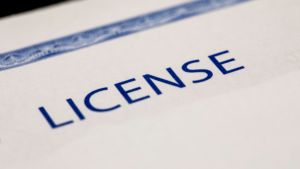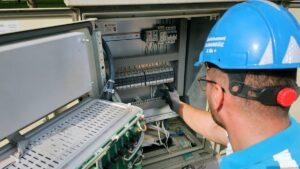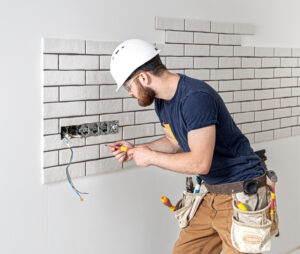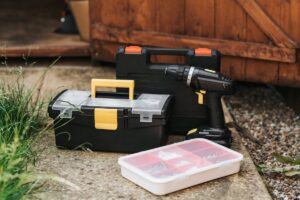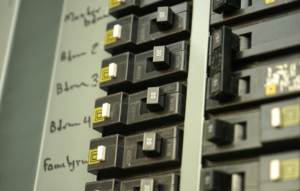As the colder months approach, it’s essential to ensure that your HVAC system is ready to handle the demands of winter. In states like Alabama and Georgia, where winters can be mild but unpredictable, proper preparation can prevent unexpected breakdowns, improve energy efficiency, and keep your home warm and comfortable.
In this guide, we’ll cover key steps to prepare your HVAC system for winter, maintenance tips, and common issues that homeowners should address before the cold sets in.
Why Preparing Your HVAC System for Winter is Essential
Before we dive into the practical steps, let’s take a moment to understand why preparing your HVAC system for winter is crucial.
- Prevent Costly Breakdowns: Regular maintenance and preparation can help identify potential problems before they become major, preventing costly emergency repairs during the winter months.
- Improve Energy Efficiency: A well-maintained HVAC system runs more efficiently, helping to reduce energy consumption and lower your heating bills.
- Ensure Comfort: Preparing your system ensures it runs smoothly throughout the winter, maintaining consistent warmth and comfort inside your home.
- Extend System Lifespan: Regular check-ups and preventive care extend the life of your HVAC system, delaying the need for costly replacements.
Steps to Prepare Your HVAC System for Winter
Now that we understand the benefits, let’s go through the steps homeowners in Alabama and Georgia should follow to prepare their HVAC systems for the winter season.
1. Schedule a Professional HVAC Inspection
The first step in preparing your system is to schedule a professional inspection. Having an expert from CMS Maintenance Service inspect your HVAC system ensures that everything is functioning correctly and efficiently.
Key Benefits of an Inspection:
- Identify Issues Early: Technicians can spot potential problems such as worn parts, leaks, or electrical issues before they escalate.
- Optimize Efficiency: Professional calibration ensures your system is operating at peak efficiency, saving energy and money.
- Clean Components: A professional inspection includes cleaning internal components such as coils, fans, and ducts, ensuring optimal airflow and heat exchange.
2. Replace or Clean Your Air Filters
One of the most straightforward yet critical tasks in HVAC maintenance is changing or cleaning your air filters. Clogged or dirty filters can restrict airflow, forcing the system to work harder, which reduces efficiency and increases energy consumption.
Tips for Maintaining Filters:
- Frequency of Replacement: Filters should be replaced every 1-3 months, especially during heavy-use seasons like winter.
- Types of Filters: Opt for high-quality, pleated filters with a MERV rating between 8 and 13 for the best balance between filtration and airflow.
- Clean Reusable Filters: If you have reusable filters, make sure to clean them thoroughly before winter to improve airflow.
3. Test Your Thermostat
Your thermostat plays a vital role in maintaining your home’s temperature. Testing it before winter ensures that it accurately controls the heating system, preventing over- or under-heating.
How to Test Your Thermostat:
- Switch to Heat Mode: Set the thermostat to heat mode and adjust the temperature higher than the current room temperature to see if the system kicks on.
- Upgrade to a Smart Thermostat: If you don’t already have a programmable or smart thermostat, now is a good time to consider upgrading. Smart thermostats allow you to program heating schedules, monitor energy usage, and even control the temperature remotely from your smartphone, helping to improve energy efficiency.
4. Inspect and Clean the Furnace
Your furnace is the heart of your heating system, and it requires proper maintenance to function effectively. Over time, dirt, dust, and debris can accumulate inside the furnace, affecting its performance.
Steps for Cleaning the Furnace:
- Turn Off the Power: Before cleaning, ensure that the power to the furnace is turned off for safety.
- Clean the Blower: The blower fan is responsible for circulating air throughout your home. If it’s dirty, it can reduce efficiency. Carefully remove dust and debris using a vacuum and a soft brush.
- Check the Burners: Dirty or clogged burners can affect the furnace’s ability to heat properly. Inspect the burners for signs of rust, soot, or debris, and clean them if necessary.
If you’re unsure about how to clean your furnace, it’s best to leave this task to a professional HVAC technician from CMS Maintenance Service to avoid damage.
5. Check Your Ductwork for Leaks
Leaky ductwork can lead to significant energy loss, as heated air escapes before it reaches your living spaces. Sealing and insulating ducts can improve your HVAC system’s efficiency and keep your home warmer.
How to Inspect Ducts:
- Look for Visible Damage: Inspect ducts in accessible areas like the attic or basement for any visible holes, gaps, or tears.
- Seal the Leaks: Use metal tape or mastic sealant to close any gaps or holes in the ducts.
- Insulate the Ducts: Ducts running through unheated spaces should be insulated to prevent heat loss.
6. Clear Debris Around Your Outdoor Unit
If you have a heat pump or any outdoor HVAC components, they can accumulate leaves, dirt, and other debris during the fall. Clearing this debris ensures proper airflow and prevents your system from overworking.
Steps to Maintain the Outdoor Unit:
- Turn Off the Power: Before cleaning, always switch off the power to the unit.
- Remove Debris: Use a broom or a brush to clear leaves, twigs, and dirt from around the unit.
- Inspect the Fins and Coils: Check the unit’s fins and coils for signs of damage or buildup, and clean them if necessary using a gentle stream of water.
7. Check Your Home’s Insulation
Even the best HVAC system won’t keep your home warm if it’s poorly insulated. Proper insulation helps maintain a consistent temperature and reduces the workload on your heating system.
Areas to Inspect for Insulation:
- Attic: Heat rises, so ensuring your attic is properly insulated prevents warm air from escaping.
- Walls: If your walls feel cold, you may need to add insulation to improve heat retention.
- Windows and Doors: Check for drafts around windows and doors and seal any gaps with weather stripping or caulk to prevent heat loss.
8. Test the Carbon Monoxide Detector
If your HVAC system includes a gas furnace, it’s essential to have a working carbon monoxide (CO) detector. Carbon monoxide is a colorless, odorless gas that can be deadly if undetected.
Safety Tips:
- Check Batteries: Replace the batteries in your CO detector before winter to ensure it functions properly.
- Test the Detector: Press the test button to make sure the alarm sounds, indicating that the unit is working correctly.
- Install New Detectors: If your home doesn’t have a CO detector, now is the time to install one near the furnace and in sleeping areas.
Common Winter HVAC Issues and How to Avoid Them
Even with proper preparation, some HVAC issues can arise during winter. Here are a few common problems and how to prevent them:
- Frozen Pipes: In freezing temperatures, condensation or water in the system can cause pipes to freeze and crack. Ensure proper insulation and keep your system running at a consistent temperature to avoid this.
- Ignition Problems: If your furnace is having trouble starting, it could be due to a faulty igniter or thermocouple. Regular maintenance can prevent ignition issues.
- Inconsistent Heating: Uneven heating is often caused by dirty filters or blocked vents. Clean filters and clear obstructions in vents to restore balanced heating.
Long-Term HVAC Maintenance Tips
To keep your HVAC system running smoothly throughout winter and beyond, consider these long-term maintenance strategies:
- Set Up a Maintenance Schedule: Plan bi-annual HVAC inspections with CMS Maintenance Service to ensure your system is in top condition.
- Monitor Energy Usage: Keep an eye on your energy bills. Sudden spikes in energy consumption could indicate an issue with your HVAC system.
- Upgrade When Necessary: If your HVAC system is over 15 years old, it may be time to consider an upgrade to a more energy-efficient model.
Keeping Your Home Warm and Efficient This Winter
Preparing your HVAC system for winter is essential to ensure it runs efficiently, keeps your home warm, and avoids unexpected breakdowns. By following these steps and investing in regular maintenance, you can extend the life of your system, lower your energy bills, and enjoy a cozy winter season.


